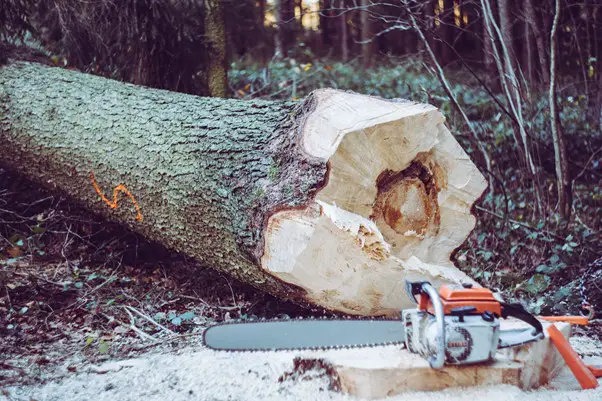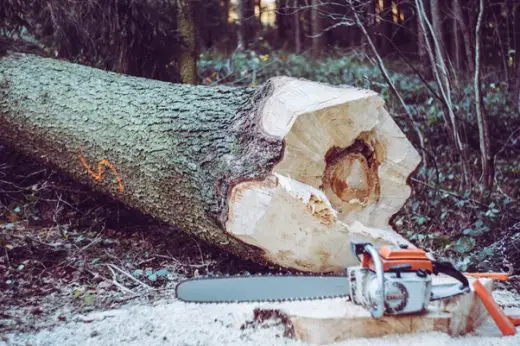Planning to buy a chainsaw Guide, Power tool tips, Online wood cutting product purchase advice
Planning to Buy a Chainsaw? Here’s What to Look For
9 Feb 2021
It’s always a good idea to do your research before buying an expensive item. If the thing you’re shopping for is needed for potentially dangerous work, the forethought is even more important. The following will explore some of the things you need to keep in mind when planning on buying a chainsaw.
Understand What You Need It For
The first step in any large purchase is to understand your needs. Of course, chainsaws are used to cut wooden things—usually trees or branches, but depending on what sort of situation you need a chainsaw for, your search can vary. Make a list of your needs and always check that the chainsaws you’re looking at meet these requirements.
Are you going to be cutting down branches that are up high, overhanging your car and roof? You might want a pole saw which is designed for heights. Do you want something on the quieter side with no fumes or emissions? You might want to look at battery chainsaws, and for bigger jobs done with a cordless electric saw, you want to seek out higher-voltage batteries. How big is the trunk or branches you plan on cutting? Often when cutting down bigger trees, people lean towards gas chainsaws because of their power and mobility.
For smaller, around the house hewing, people consider corded electric saws. These are often the lightest option, so they can suit those with less hand strength as well.
Learn About Pitch And Gauge
When shopping for a chainsaw, you’ll notice two words popping up frequently: pitch and gauge. Pitch refers to the spacing of the rivets in the chain—this will need to correspond with the spacing of the teeth on the sprocket. Gauge refers to the thickness of a chain (which needs to fit in the groove in the bar). You’ll need to note these two measurements if you want to purchase a spare chain now or in the future.
Consider Anti-Vibration Features
Depending on how much work you’re planning on doing, you might want to look into chainsaws that have anti-vibration features. Chainsaws vibrate when you use them because they’re doing so much work, but as it turns out that extended periods of vibration are bad for the body. The pulse of a chainsaw can be transmitted to your hands and result in fatigue, pain, cyanosis, or Raynaud’s disease—which can alter the quality of your life. You also run the risk of repetitive stress injuries if you ignore the effect of vibrations on your body.
Look For Low-Kickback Options
Chainsaws, on occasion kickback. This means that the machine unexpectedly forces itself back away from what you’re cutting and upwards. Chainsaw accidents are not too frequent, but when they do happen, kickback is often the culprit.
Check Out Spring-Assist Features
If you’re getting a gasoline-powered saw but have reason to suspect that you’re not going to manage comfortably with the pulling force needed to start the saw, you might want to pick a model that contains spring-assist starting. This will limit the pulling force you need to get a gas saw up and running.
For Added Safety Look For The Chain Break Option
Chainsaws containing a chain break feature have been designed to stop the chain whenever the saw is moved abruptly or is impacted. This means that if you drop the chainsaw or fall, the machine will more than likely shut off, reducing the risk of you and anyone else nearby.
Get Something To Protect Your Ears
Yes, ear protecting devices are not technically part of a chainsaw, but the sound of operating one can do severe and lasting damage to your ears. Think about never being able to hear your favorite song again and get yourself something to protect your ears, as noise-induced hearing loss and tinnitus are both widespread. The frustrating part about these conditions is that, in many cases, they are entirely preventable.
Something To Protect Your Eyes
Again, this isn’t part of a chainsaw per se, but if you don’t have eye-protecting goggles with side shields, you need to purchase them in addition to your chainsaw. Tiny skewers fly from trees when a chainsaw is employed—if one hits your eye, you might not see again from it.
The above breakdown of features and chainsaw types should help you narrow down your search considerably. Once you have a few potential models in mind, spend some time reading online reviews from other people who have used the device. If a review seems far too positive or comically negative, try clicking on the name of the reviewer and seeing what other comments or reviews they’ve left on the internet. This should give you a good idea of whether their review feels accurate or is just a representation of their grumpy or cheery disposition.
Comments on this guide to Planning to buy a chainsaw? Here’s what to look for article are welcome.
Home Articles
Residential Architecture
Woodworking
Woodworking Posts
Guide to CNC Machining and its purposes
Improve Your Carpentry Skills at Home
Everything you need to get started with Woodworking
Comments / photos for the Planning to buy a chainsaw advice page welcome






